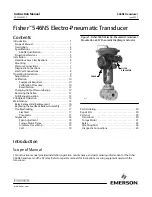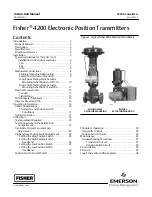
ARTEX PRODUCTS / ACR ELECTRONICS, INC
DESCRIPTION, OPERATION, INSTALLATION AND MAINTENANCE MANUAL
B406-4 (453-5004)
Page 29 of 70
25-62-03
c)
When the total of all known transmissions exceeds one hour; or
d)
On or before battery replacement (expiration) date.
SUBTASK 25-62-03-750-001
F.
G-Switch Functional Check
–
Item 4a
CAUTION: A JUMPER AND 50-OHM LOAD IS REQUIRED TO PERFORM THIS CHECK. DUE TO
POTENTIAL OF PHYSICAL OR ELECTRONIC DAMAGE IF THE JUMPER OR 50-OHM LOAD IS
IMPROPERLY INSTALLED, THIS STEP SHOULD BE ONLY PERFORMED BY AN EXPERIENCED
TECHNICIAN/MECHANIC.
1)
Reinstall the battery temporarily. See SUBTASK 25-62-03-450-001 on page 60.
NOTE:
For the purposes of this and subsequent tests, it is suggested that the battery be installed
with only two screws, located diagonally from each other.
2)
Perform this functional check within the first 5 minutes after the hour (UTC), as required by AC 43.13-1,
Chapter 12, § 12-22, Note 3.
3)
Notify any nearby control tower of your intentions.
4)
Install the 151-2012 test plug (receptacle) on the ELT plug or jumper ELT plug Pins 5 and 8.
NOTE:
The ELT cannot be activated using this procedure unless Pins 5 and 8 on the ELT plug are
jumpered. See Figure 20 Remote Switch Panel Harness Wiring Diagram on page 53.
5)
Verify the ELT switch is in the “OFF” position.
6)
Monitor 121.5 MHz on an AM receiver.
7)
Activate the ELT by using a rapid forward (i.e., throwing) motion in the direction of the arrow on the ELT
label, followed by a rapid reversing action.
8)
Verify activation by listening for the aural sweep tone on the receiver.
9)
Reset the ELT by toggling the control switch to the “ON” position and then back to the “OFF” positio
n.
SUBTASK 25-62-03-750-002
G.
G-Switch Functional Check (Helicopter Models Only)
–
Item 4b
1)
This procedure outlines the steps required to test the five-axis G-switch installed in ARTEX Helicopter
Model (HM) ELTs.
2)
Testing of the primary and five axis G-switch can be accomplished by simulating a rapid deceleration in
the required direction of the G-
switch. Although the “football throw” test as outlined in item 4a is
sufficient to test the forward G-switch, a sturdy padded surface, such as a padded chair or foam-covered
workbench, is required to simulate the G-force required to trigger the remaining axes. The padding of
the surface is required to prevent damage to the ELT.
NOTE:
The fixed wing G-switch is triggered by approximately 2.3 Gs of deceleration (axis +X in
Figure 7), whereas the five-axis G-switch is triggered by 12.5 Gs of deceleration (axes -X,
-Y, +Y, -Z, and +Z in Figure 7), and requires a significant force to activate. The higher
G-rating precludes inadvertent activation in helicopter applications but will allow for
activation during a mishap.
















































